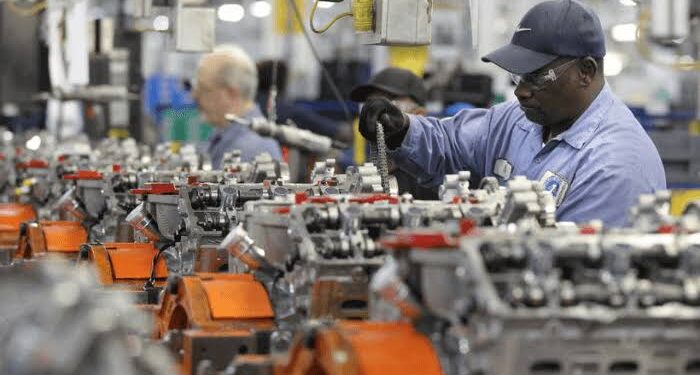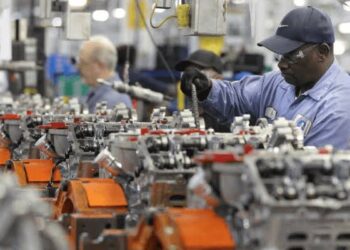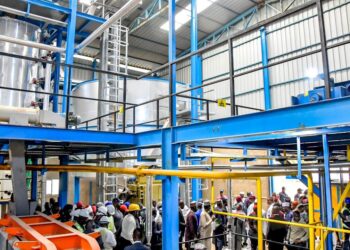Industry stakeholders are concerned as the gap between real and services sectors’ contributions to the economy widens in favour of the latter.
The stakeholders say the development is consolidating the country’s economic structural defect, which subdues progress towards industrialisation, as the real sector is considered the bedrock of economic growth.
Available official data shows that while the real sector, consisting mainly of manufacturing and agriculture, is entering its sixth consecutive year of decline in 2025, the services sector is on the increase.
Data shows that the manufacturing sector recorded a mere 8.8 per cent average contribution to the Gross Domestic Product, GDP, between 2020 and 2024. The Agriculture sector grew by 25.5 per cent
In contrast, the Services sector recorded average contributions of 54.9 per cent.
Data from the National Bureau of Statistics (NBS) shows that the manufacturing sector’s contribution to the economy in 2020 stood at 8.99 percent and 8.99 percent in 2021, it declined to 8.91 percent in 2022; 8.64 percent in 2023; and 8.41 percent in 2024.
Also, the Agriculture sector contributed 26.21 percent in 2020 and declining to 25.88 percent in 2021; 25.58 percent in 2022; 25.18 percent in 2023; and 24.64 percent in 2024.
Comparatively, the Services sector contributed 52.44 percent to GDP in 2020, rising to 53.56 percent in 2021; 55.40 percent in 2022; 56.18 percent in 2023; and 56.89 percent in 2024.
In the first quarter of 2025, though the GDP rebasing improved manufacturing sector contribution to 9.62%, industry experts said the contribution was actually lower in real terms.
Further, the improvement did not make positive impact on the widening gap as the services sector’s contribution increased further to 57.50 percent.
Worsening the position of the real sector is another decline in the Agriculture sector contribution which stood at 23.33 percent.
The Director General of MAN, Segun Ajayi-Kadir, lamented the underperformance of the industry sector in general, especially the manufacturing sector. He stated that manufacturing growth has remained uneven and fragile across sub-sectors.
“Manufacturing is structurally weak, with sub-sectors that should be growth drivers performing below potential, as indicated in the report. Based on the figure released, the average annual growth rate of the manufacturing sector between 2019 and 2024 is negative (-0.76 percent).
“This means Nigeria’s manufacturing sector has been shrinking in real terms over the last five years. The rebasing confirms that Nigeria’s economy may be statistically larger, but it is not more productive, nor more industrialised.
“Industrial output remains largely declining. Following the rebasing, the industrial sector’s share of GDP dropped from 27.65% in the 2010 base year to 21.08 percent in the 2019 base year.
“More worrisome is the underperformance of the manufacturing sector. Despite its critical role in job creation, export diversification, and economic transformation, the sector’s contribution to GDP remains low and increasingly volatile.
“Key subsectors such as oil refining and motor vehicle assembly have recorded consistent declines in real output, eroding Nigeria’s industrial performance.”
“Nigeria must re-industrialise to achieve inclusive growth, build export capacity, and reduce dependence on primary commodities and informal activities.” he said.
































